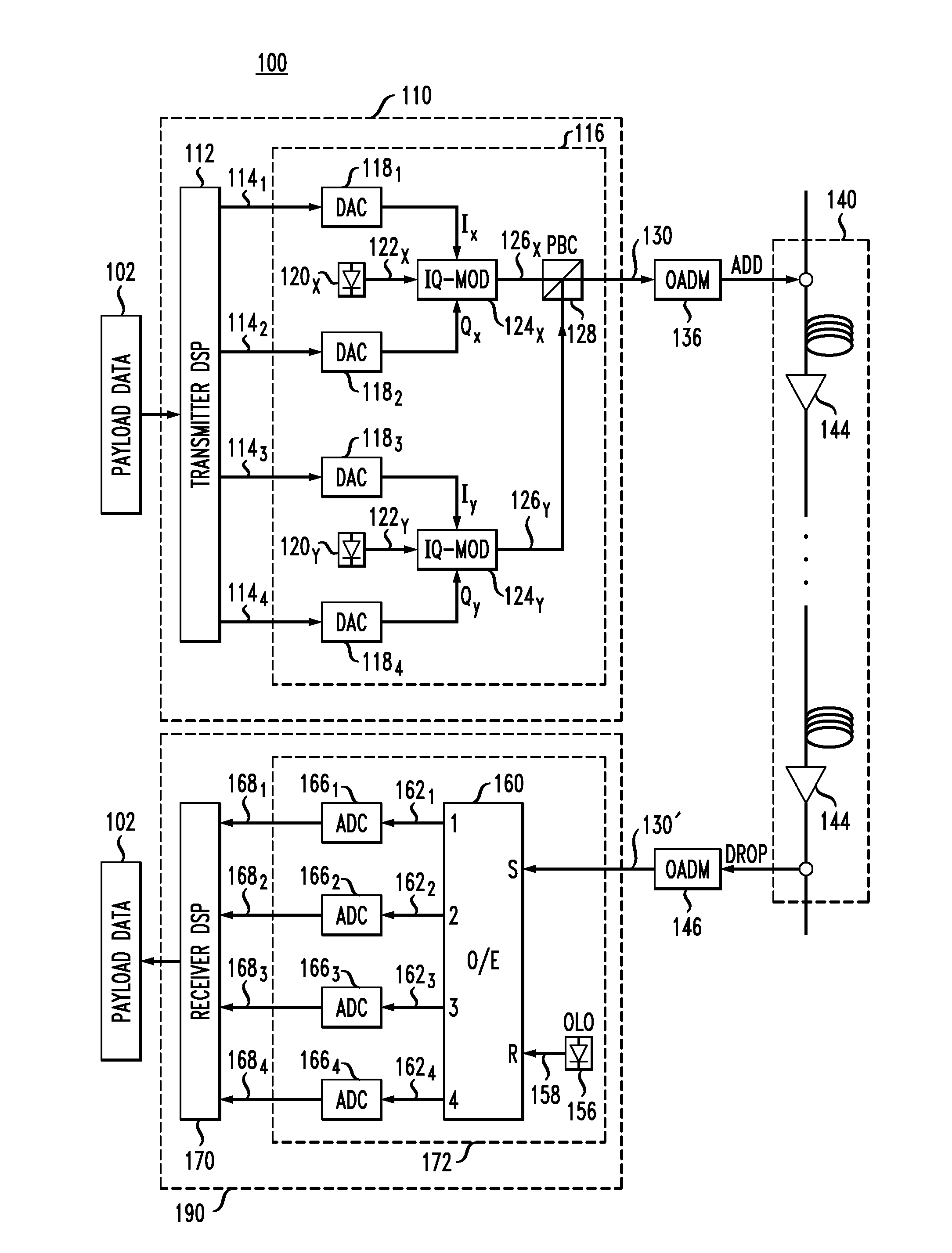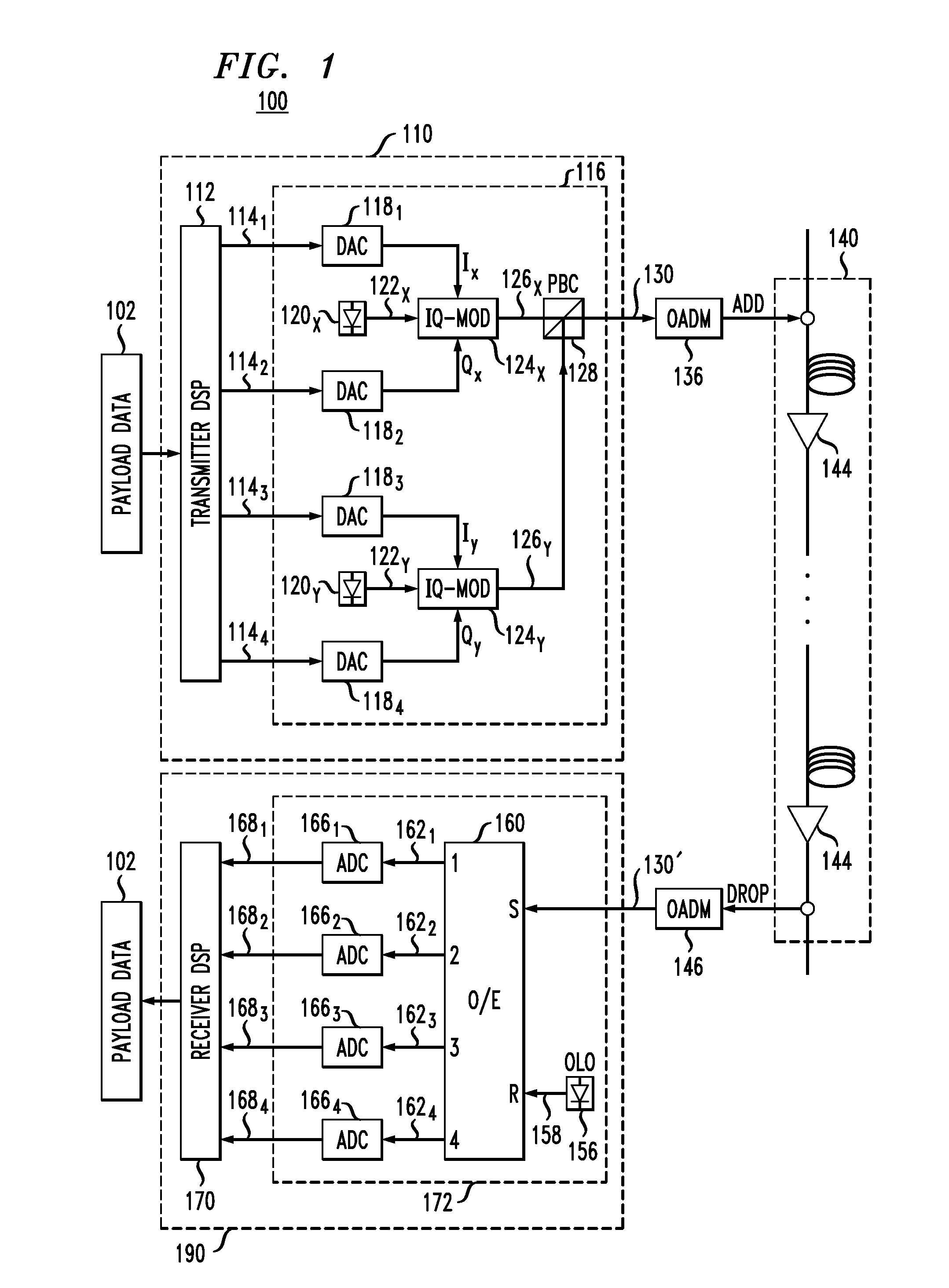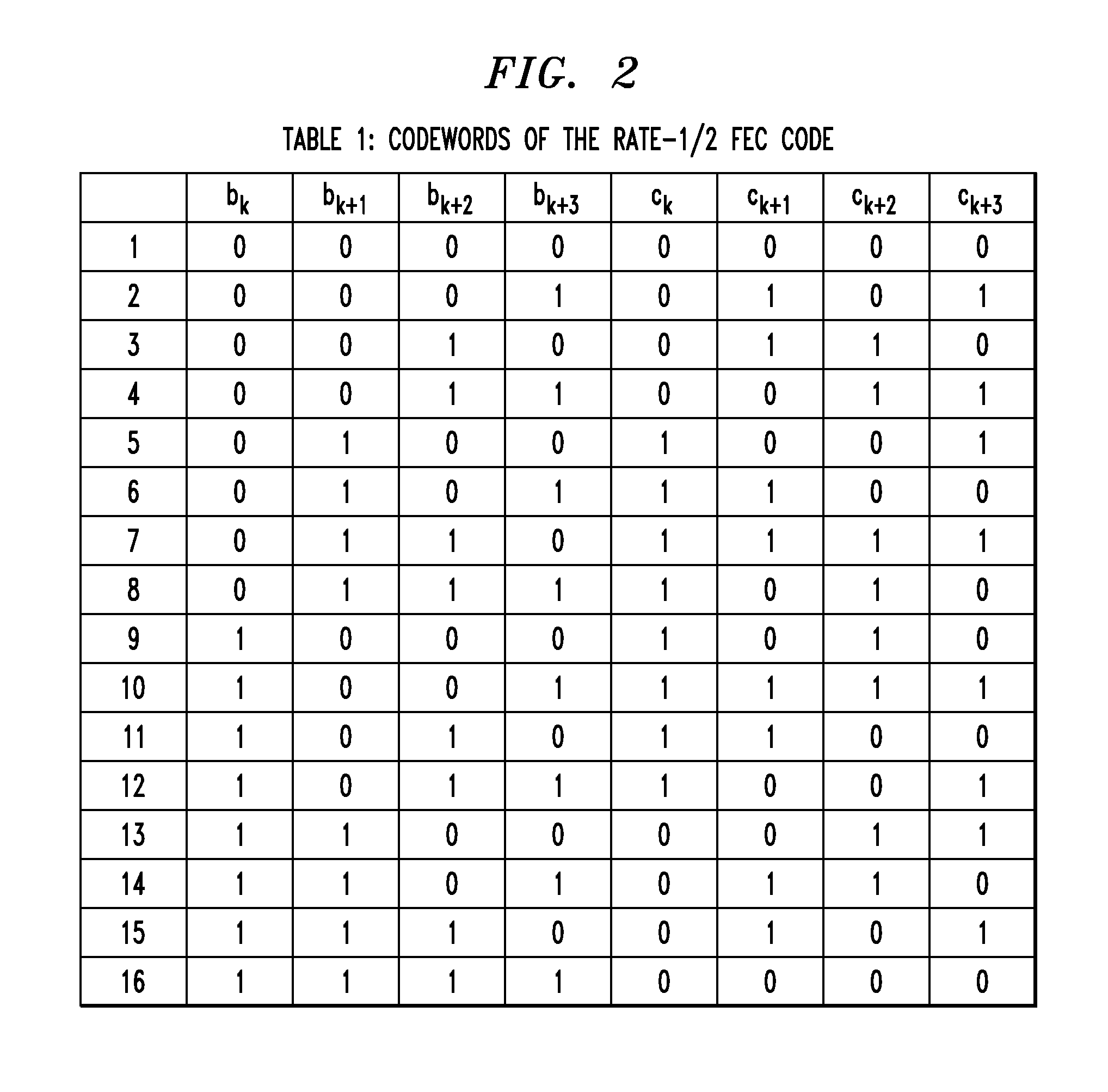Use of parity-check coding for carrier-phase estimation in an optical transport system
a carrier-phase estimation and optical transport system technology, applied in the field of forward error correction techniques for carrier-phase estimation in optical transport systems, can solve the problems of relative complexity of the receiver structure, pll circuits may add significantly to the cost and complexity of the corresponding coherent optical receiver, and achieve accurate recovery of absolute phase
- Summary
- Abstract
- Description
- Claims
- Application Information
AI Technical Summary
Benefits of technology
Problems solved by technology
Method used
Image
Examples
Embodiment Construction
[0006]Disclosed herein are various embodiments of an optical transport system configured to use a modulation scheme in which a phase rotation applied to a sequence of phase-shift keying (PSK) or quadrature amplitude modulation (QAM) constellation symbols encoding a codeword of a forward-error-correction (FEC) code produces a modified sequence of PSK or QAM constellation symbols encoding a bit-word that is not a valid codeword of that FEC code. Based on this property of the modulation scheme, an optical receiver may be configured to relatively accurately recover the absolute phase of the optical carrier wave of the received modulated optical signal (e.g., resolve a 90-degree phase ambiguity) by applying maximum likelihood sequence estimation (MLSE) processing to each portion of the signal carrying a valid codeword of the FEC code. For example, for a modulation scheme employing a 2n-PSK constellation (where n is a positive integer), the optical receiver may be able to recover the abso...
PUM
 Login to View More
Login to View More Abstract
Description
Claims
Application Information
 Login to View More
Login to View More - R&D
- Intellectual Property
- Life Sciences
- Materials
- Tech Scout
- Unparalleled Data Quality
- Higher Quality Content
- 60% Fewer Hallucinations
Browse by: Latest US Patents, China's latest patents, Technical Efficacy Thesaurus, Application Domain, Technology Topic, Popular Technical Reports.
© 2025 PatSnap. All rights reserved.Legal|Privacy policy|Modern Slavery Act Transparency Statement|Sitemap|About US| Contact US: help@patsnap.com



